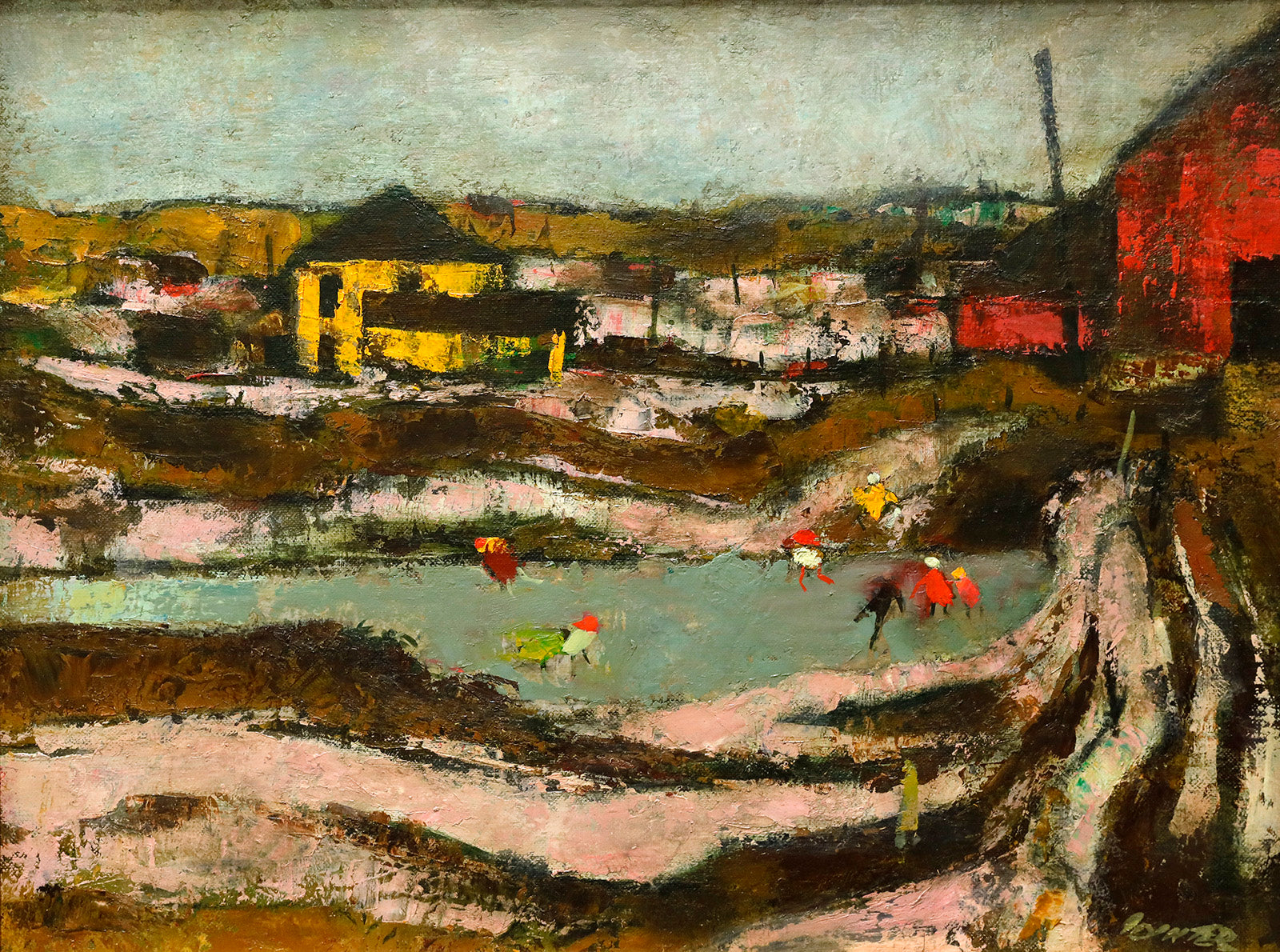William Winter
William Arthur Winter (1909–1996, Winnipeg, Manitoba) studied under Frank H. Johnston and Lionel LeMoine FitzGerald before embarking on a career that bridged commercial art and fine painting. Based in Toronto from the 1940s, he became known for his lively depictions of city life, particularly children, rendered in oil, acrylic, and watercolour. A post-war modernist, Winter balanced wit and sensitivity in portraits, figures, and urban scenes, later teaching at the Ontario College of Art and completing mural commissions.William Arthur Winter (1909–1996, Winnipeg, Manitoba) was a Canadian post-war modernist whose work centered on the human figure and the rhythms of urban life. He studied at the Winnipeg School of Art under Frank H. Johnston and Lionel LeMoine FitzGerald, later working in commercial art with Brigden’s and co-founding the Toronto firm Wookey, Winter, Bush in 1942. While illustrating for Maclean’s and New World Illustrated by day, Winter filled evenings with sketching in cafés, streetcars, and on city streets, developing a sharp eye for gesture and movement.
By the 1940s and 50s, Winter was acclaimed for expressive depictions of Toronto’s inner city and its children, works balancing realism, wit, and sensitivity. His painting Midnight at Charlie’s (1945), now in the Vancouver Art Gallery, exemplifies his social realist vision. In 1955 he left commercial art to paint full time, depositing Street Scene at the National Gallery of Canada as his RCA diploma work. Later canvases, such as The Multitude (1959), reflected broader social themes, including the anxieties of the nuclear age.
Winter completed mural commissions for Canadian Pacific Rail, the McLaughlin Public Library, and other institutions, and taught at the Ontario College of Art during the 1960s. He travelled extensively in Europe and Mexico, but his legacy rests on his ability to capture the vitality of ordinary life—particularly children—with warmth, colour, and movement.


